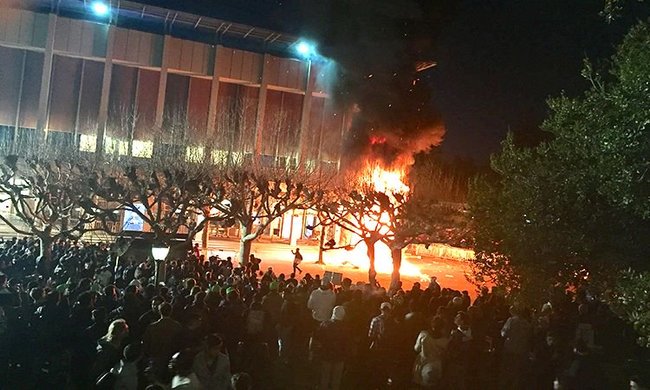This article first appeared in the Daily Caller.
Note: After this article appeared Visual Capitalist published a map of the U.S. showing the largest employer in each state. It turns out that the state university system was the largest employer in California, Hawaii, Iowa, Michigan, Nebraska, New Mexico, New York, North Carolina, Wisconsin, and Vermont—testifying to the enormous power of these often-intolerant institutions.
****
Intolerance at universities is nothing new, but the media are finally covering it. A recent incident was the pack attack by Berkeley’s strutting jackdaws against a young woman who chose to abstain from a student government resolution against the Trump administration’s effort to define “sex” to mean biological sex rather than sexual orientation or gender identity.
Americans are properly irritated, and sometimes alarmed, by intolerant conduct. So it is fair to ask ourselves why we continue to pay for it.
The issue is particularly acute at the huge universities operated by states and heavily subsidized, directly or indirectly, by the state and federal governments. The public money continues to flow even when Republicans enjoy legislative control: Republican lawmakers seem to harbor a political death wish that induces them to tax citizens in their own political base to feed their most virulent opposition.
Politics aside, massive public university funding makes no sense in today’s world. Modern communications make it far less necessary to concentrate people than it once was. Many of the skills actually or allegedly taught offer high market payoffs — meaning that most students, or their prospective employers, can pay for their own training. (Do taxpayers really need to subsidize the production of lawyers, for example?) And while you can make a strong case for publicly supporting the liberal arts because of their centrality to western culture, many state universities are actively betraying that culture. Moreover, liberal arts and western culture are probably better taught in small private colleges.
One reason massive public universities are able to feed off the rest of us is that they are very, very good at legislative lobbying. They know how to use their subsidized sports teams to gin up alumni support. They bribe lawmakers with free football tickets and other perks. They tout ridiculous “studies” claiming that state universities benefit state economies — although on balance, they don’t.
Lobbyists from left-leaning campuses like to reassure conservative lawmakers by emphasizing their institutions’ commitment to the free and open exchange of ideas. We all find it pleasing to believe that academic orthodoxy and intolerance are deviations from the norm.
Yet historically speaking, that is not true: Since their creation in the Middle Ages, universities have been hotbeds of orthodoxy and intolerance. They tend to fawn on those in power, and their history is marred by repeated exclusion, persecution, and expulsion of intellectual visionaries. Some of those visionaries — Galileo Galilei is one example — nevertheless succeed in remaking the world. But others are merely crushed.
Until well into the 19th century European and American universities wouldn’t admit or hire you unless you professed the “right” religion. As recently as 1964 the dean of the law school that later employed me could threaten a student with expulsion for working on the “wrong” presidential campaign. The details vary over time but the underlying intolerance never goes away: Throughout my academic career (1985-2010) I experienced firsthand the professional hardships faced by academics who dissent from university orthodoxy.
The truth is the “open university” story is largely a 20th century myth deployed at the convenience of the left. Berkeley’s history is illustrative: The Berkeley Free Speech Movement was created primarily to protect left-wing political activities, such as protest against the Vietnam War. Once the left took control, “free speech” no longer applied.
Those involved in state mega-universities like to call them “communities.” They are nothing of the kind. They consist primarily of transients at the time of life when the wisdom-to-pretention ratio is at its lowest and the propensity for impulsive behavior is near its highest. It is particularly important to integrate people of that age into the larger population, but universities segregate and concentrate them instead. And rather than serving as the “adults in the room,” many faculty members, while pampered and protected by the world, are ignorant of how it works and resentful of it. Faculty hiring procedures assure this never changes.
At one time autocratic administrators held a lid on this volatile campus stew. But the autocrats are gone. Today’s administrators float on the tide, deploying their skimpy reserves of firmness principally against the few who dare to stand against the flow. State universities have become vulnerable to disruption by paid political operatives who use students as cannon fodder.
Lawmakers should turn away from the big public university model and encourage small private institutions instead — even if that means giving up those university football tickets.








